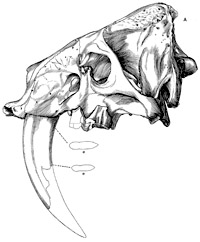Museum, University of Nebraska State

Bulletin of the University of Nebraska State Museum (1924–2023)
The Archeology of the Lime Creek Site in Southwestern Nebraska
Abstract
The Lime Creek site is a stratified Early Lithic (Paleo-Indian) camp site buried in the Terrace-2A alluvial fill of a valley in the dissected loess plains. Geological correlations indicate an early Valders (Wisconsin- IV) date. A radiocarbon date (No. C-471) of 9524 B.P. from just below Lime Creek I, the lowest occupation zone, must be taken only as a minimal possible age for the site. The animal bones in Lime Creek I are primarily of pronghorn and beaver, whereas those in Lime Creek III, the highest occupation zone, are exclusively of bison. The change in hunting patterns seems due to a climatic shift toward colder and drier conditions. The animal species represented are all modern except for the bison, although some of the species are no longer present in this region. The bison are larger than modern bison and are· provisionally identified as Bison antiquus. The diagnostic artifacts in Lime Creek I include a Scottsbluff point, a Milnesand point, a transversely flaked point fragment, and 17 Lime Creek knives which have roughly parallel sides and straight bases. On the basis of this material the Lime Creek Material Complex is defined. It may also be represented in the Scottsbluff level of the MacHaffie site in Montana. The points also resemble those in the Portales Complex in New Mexico which seems to be more recent than Lime Creek I. In Lime Creek II the cultural evidences are too scanty to permit interpretation. In Lime Creek III the distinctive items are a Plainview point, a Milnesand point, an obliquely flaked midsection of a point, and a thick scraper. These specimens are too few for definition of a complex, but they do indicate some changes in point-making traditions from the lowest zone and also suggest interrelationships between a number of early components in the western and southern Plains. The geological evidence for an early Valders date for the site is at variance with evidence elsewhere that the Lime Creek point types are post-Valders in date.

